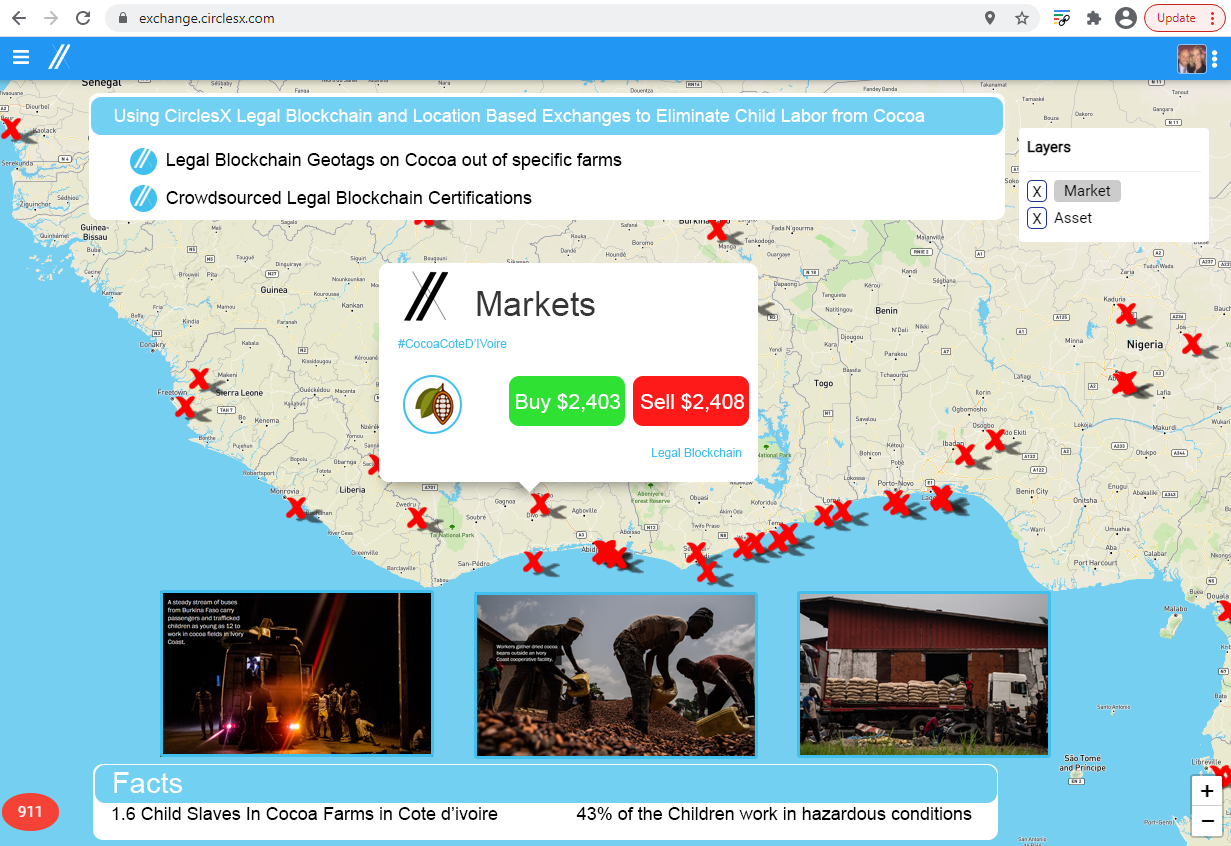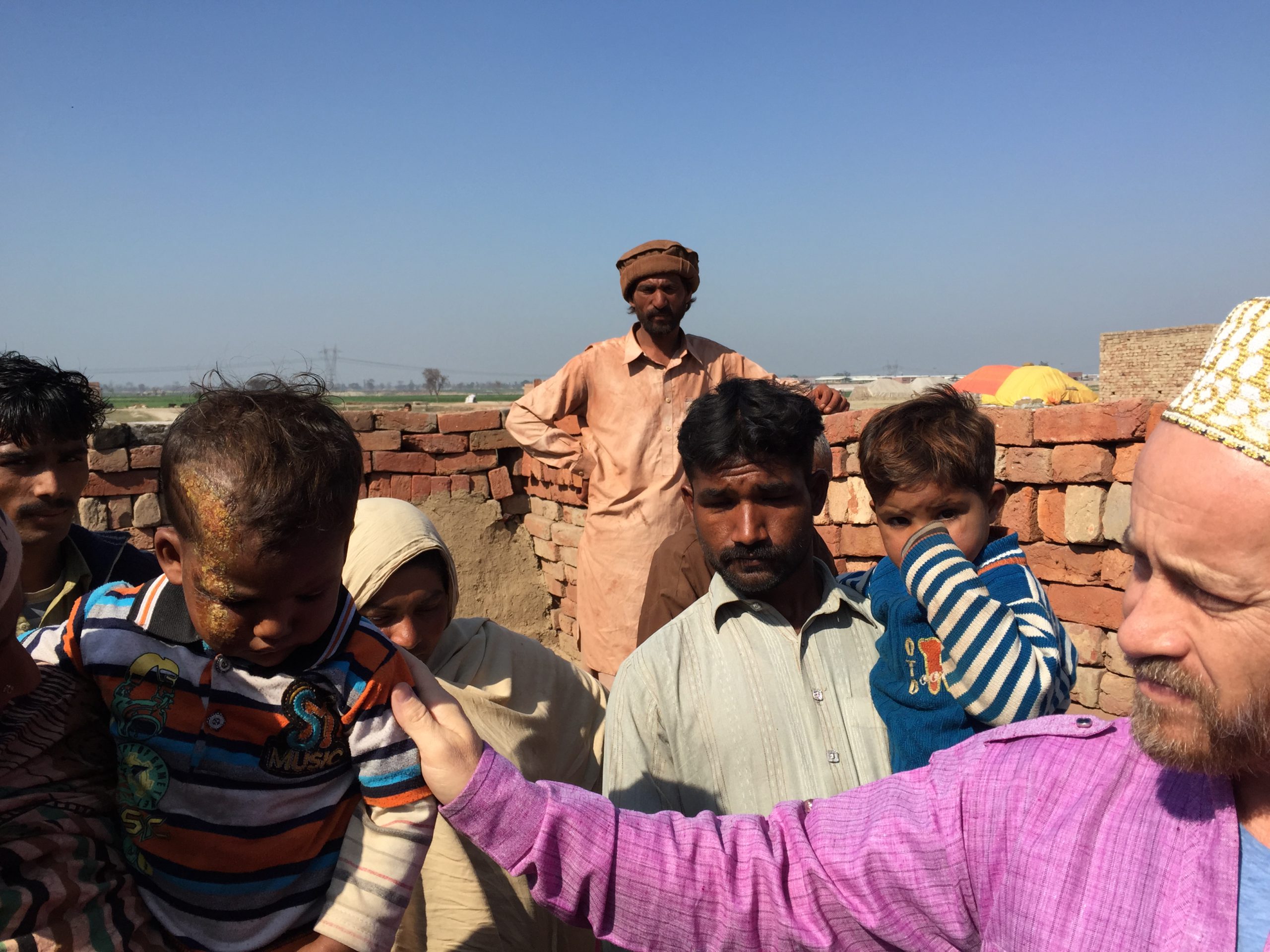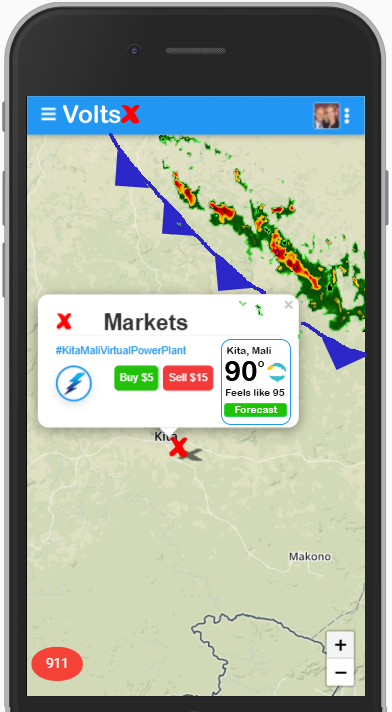Geolocation Exchange Technologies to prevent Human Trafficking
Commodity exchange methods of the past are promoting human trafficking with corporations turning a blind eye and “hoping they don’t get caught”. CirclesX technology platform which enables “geolocation exchanges” and “legal blockchain” has a patented solution to tie the exact geolocation of a farm or produce or goods sold at a farm to a specific location. Imagine scanning a stalk of bananas or your cup of coffee and learning where they came from with pinpoint location accuracy? This particular innovation was created to help large corporations ensure their products are legally brought to market and that child slaves were not used in the production of the good or service. This technology has become particularly relevant as the US Supreme Court is deciding on liability for Nestle and Cargill who are using child slaves to produce their products.

The global trafficking situation is no different in South Asia. In South Asia, we have seen countless children burned in the brick factories without any accountability. A typical product or market functions where products may be assigned a tracking code, but this method has very limited data associated to the tracking code and it does not allow for a plurality of parties to contribute to the data blockchain so that the immutable blockchain is verified and auditable from the perspective of multiple parties who may contribute to the product, service, biomarker or medical record. While large companies like IBM have tried to do work in blockchain, their methods do not effectively promote contribution or incentives because their proposed systems are incomplete or not designed to handle the supply chains where they are placed.
Today as we visit a grocery store, there is no way of knowing if the banana you purchase is from a eco-friendly farm or for that matter, the integrity of the organic certification process. If a consumer visits Starbucks, they have no idea if the chocolate brownie they purchase was made using cocoa beans that were harvested on an Ivory Coast cocoa farm which is known to host child slaves. A valid question for a person spending one hundred thousand dollars on a Tesla: “I want to know if the cobalt in the battery of my car was harvested in a Democratic Republic of the Congo artisanal mine which was known for child slavery, fatal accidents and violent clashes between miners and security personnel.”
In countries such as Pakistan and India, millions of children are forced to labor in brick factories where they often are burned from the high temperature bricks and there is no account to how the bricks were made or where they came from. Similarly, a customer at a restaurant may have eaten food which was linked to E. coli or salmonella. The United states alone reports over 5,000 deaths a year from food-borne illnesses. The FDA reported it took several months to track tainted peanut products to the Peanut Corporation of America in Georgia. Tracking food from stores to restaurants back through food chains of distributors, packers, truckers, processors, and to the farm is fraught with roadblocks and confusion, some compare the process to a scavenger hunt. As a solution, we are working with various corporations to place our dynamic QR codes on their product which then update and pair with mobile devices to ensure product integrity.

A brick factory visit in South Asia where a child worker was burned from the hot bricks 2015 (Courtesy of SimpsX Technologies LLC)
Read our CirclesX letter and prayer to the Supreme Court here.
The Supreme Court of the United states heard oral arguments on December 1, 2020 from Neal Katyal, arguing for Nestlé and Cargill, who told the Court that corporations cannot be liable under international law for any human rights crimes, including aiding and abetting child slavery. He attempted to discuss the issue in the abstract, avoiding the specifics of the allegations in this case (and averring his clients’ abhorrence of child slavery) while focusing narrowly on the historical question of whether corporations could be sued under international law in 1789, when the first Congress passed the Alien Tort Statute (ATS). The six Doe respondents in the case relied upon the ATS in suing Nestlé and Cargill for aiding and abetting their abduction and enslavement when they were children forced to harvest cocoa in Cote D’Ivoire.
While counsel for the respondents effectively responded to the legal argument, demonstrating that corporations have universally been subject to liability for serious human rights violations including child slavery, it was clear at oral argument that even the most conservative Justices looked past the pure legal argument to its practical implications. All the Justices seemed reluctant to grant Nestlé and Cargill’s request to be immunized from their participation in a cocoa harvesting system that is dependent upon cheap labor of child slaves. After Katyal’s repeated insistence that individuals could be sued for child slavery but if they joined together and formed a corporation they were immune from liability, Justice Alito stated, “Mr. Katyal, many of your arguments lead to results that are pretty hard to take.”
For those less familiar with the worlds cocoa trade, the world’s chocolate companies have missed deadlines to uproot child labor from their cocoa supply chains in 2005, 2008 and 2010. Next year, they face another target date and, industry officials indicate, they probably will miss that, too. As a result, the odds remain substantial that a chocolate bar bought in the United States is the product of child labor.
These untenable results would hold that Nestlé and Cargill could, along with the other large cocoa companies, continue to profit from cheap cocoa harvested by enslaved children without any risk of liability for these crimes. This article seeks to connect the legal arguments in the case with their meaning in reality – the “hard to take” results of corporate impunity for human rights violations in cocoa production.
The Faces of Child Slaves in Chocolate Production
The children in question were abducted from their families in Mali and Burkina Faso, taken to a foreign country (Côte D’Ivoire), and forced to work under brutal conditions. If this fact pattern sounds familiar, it may be because this practice was made illegal in the United States by the Act to Prohibit the Importation of Slaves in 1808, and unconstitutional by the Thirteenth Amendment in 1865. Yet trafficking of children into slavery remains common – in contrast with the representations the companies make to consumers about the progress of various programs to end child slavery.
A recent study by the University of Chicago, funded by the U.S. Department of Labor, found that child labor has steadily increased since the major cocoa companies promised to end their reliance on child labor in the 2001 Harkin-Engel Protocol. Today there are about 1.6 million children harvesting cocoa in Côte D’Ivoire and Ghana alone.
The Process of Abduction and Enslavement: The John Does’ Stories
Though the numbers are increasing, the horrific stories of the child slaves remain virtually unchanged across the years. The six John Does whose case is now in the Supreme Court filed their complaint against Nestlé and Cargill in 2005.
The John Does were all abducted between 1996 and 1998 in Mali by traffickers, called in Mali “locateurs,” who operate in places where boys are gathered looking for odd jobs, usually at a bus station. The Does were between the ages of 10-14 when they were abducted. Most of the Doe plaintiffs were approached at the bus station in Sikasso, Mali, where many locateurs prey on boys seeking local work and traffic them into cocoa production in Côte D’Ivoire, about 62 miles away, or Burkina Faso, only 28 miles away. The Doe plaintiffs from the Sikasso area were abducted when a locateur approached them and offered a good paying job harvesting cocoa in Côte D’Ivoire. They were told they had to get into the minibus the locateur was driving and leave immediately if they wanted the job. Desperate for any work, they each complied.
Once they reached Côte D’Ivoire, the John Doe plaintiffs were taken to remote cocoa plantations where they were delivered to the farmers who essentially owned them for the next few years. John Doe VI actually witnessed the farmer who “purchased” him pay 20,000 CFA (approximately $40) to the locateur. John Doe VI then worked without pay until he managed to escape three and a half years later. None of the six named plaintiffs in this case received any pay whatsoever in the years during which they labored on the cocoa plantations; like most slaves they merely worked for (barely) enough food to keep them alive to continue working.
Like all the child slaves harvesting cocoa, the John Does were required to perform hazardous work, including using machetes to cut down, open, and clean cocoa pods, as well as applying hazardous pesticides and herbicides without any protective equipment. All of these tasks are prohibited for children to perform under any circumstances by ILO Convention No. 182, ratified by the United States in 1999 and by Côte D’Ivoire in 2003, because they are among the “worst forms of child labor.” In 2001 when Nestlé, Cargill and the other major cocoa companies signed the Harkin-Engel Protocol and pledged to end their use of child labor by the year 2005, they specifically referenced Convention No. 182 and promised to prevent and prohibit any children from performing hazardous work.
Each of the John Doe plaintiffs worked for two to four years on the plantations where they were enslaved. They were constantly guarded and were punished if they tried to escape. John Doe IV had the bottoms of his feet cut with a machete and the wounds rubbed with pepper when he tried to escape. The others witnessed such punishments being inflicted on other children. John Doe III witnessed another child being forced to drink urine as a punishment for trying to escape. All of the John Does were beaten with whips or branches by their overseers for failing to work fast enough, and several sustained permanent injuries or scars from these beatings.
Against all odds, with no money and no knowledge of where they were in relation to Mali, each John Doe managed to escape and return to Mali, and were interviewed through the help of Abdoulaye Macko, the former Counsel General of the Malian Embassy in Côte D’Ivoire. Macko began pressuring his own government to do more about child trafficking and started personally rescuing child slaves, including John Does IV and V. Warned to stop creating diplomatic tensions with Côte D’Ivoire, Macko was fired from his position and has been working as an advocate against trafficking and slavery ever since.
The Persistence of Vulnerability but using Technology to move forward
Not much has changed in the industry since the Does were abducted, trafficked, and eventually managed to escape. Many children in Mali remain at severe risk of being trafficked into cocoa production to replace the Does.
Currently in our work in Mali, we are working with entrepreneurs to help develop “mobile trading exchanges” to help them both use futures to fix the prices of their product so that they may obtain bank loans. These “location based exchanges” also allow for product to be tracked at origin and along the supply chain path with various blockchain entries along the path to verify the integrity of the product. With these technologies we are hoping to interject bank capital to help raise wages.

A farm near Bamako, Mali with our farming and technology team (Courtesy of SimpsX Technologies)

A “location exchange in action trading power in Western Mali” (Courtesy of SimpsX Technologies)
The Economics of Trafficking and Slavery
In our travels we illustrate three key reasons why trafficking and child slavery continues unabated. There is a large group of extremely poor, vulnerable boys in Mali and Burkina Faso who are on the verge of starving and will do about anything for the promise of a paying job. Second, these children are not aware of the common danger of child traffickers preying upon boys like them. Finally, corruption of law enforcement officers who are doing nothing to stop trafficking, and may well be paid off by the traffickers, allows this horrific crime to occur in broad daylight on a massive scale. These conditions create a steady supply of child labor available to cocoa producers.
Meanwhile, Nestlé, Cargill and other large companies portray themselves as innocent bystanders to the inevitability of child slavery in Côte D’Ivoire, but their demand for cheap cocoa is driving the practice. There is no cultural tradition or history of using child slaves in Côte D’Ivoire. The farmers and cooperative managers uniformly agree that the cocoa industry’s explosion in the last 20 years following the civil war in Côte D’Ivoire created high demand for cheap cocoa, which drove farmers to look for cheap labor. Ultimately, the locateurs filled this demand by offering the free labor of trafficked children in exchange for a fee and travel costs. These conditions are well known throughout the industry, but so far, corporate legal impunity for labor conditions has ensured a steady demand for trafficked children to work the plantations.
Yet this is also not the only way to produce chocolate. Indeed, in an amicus brief filed in Doe v. Nestlé, 18 small and medium size companies explain clearly how they produce their cocoa without resorting to child labor. Among their methods for preventing child labor in their supply chains, these model companies pay a premium price for their cocoa that allows their farmers to earn a living wage. This basic step, coupled with due diligence, prevents the use of forced or child labor and demonstrates that responsible production is possible.
In contrast, none of the programs the cocoa companies are running to create the impression they are fighting against child slavery address these obvious causative factors. It is therefore unsurprising that these programs have been unsuccessful at reducing child slavery in the industry, and indeed, have failed on their own terms. After missing the initial 2005 deadline of the Harkin-Engle Protocol to end their reliance on child labor, the industry unilaterally extended the deadline to 2010, and then after again doing virtually nothing to comply, they committed in 2010 to a 70 percent reduction in the worst forms of child labor by 2020. The companies have since extended until 2025 their “voluntary” deadline to stop profiting from child slaves harvesting their cocoa – but in 2018, an industry spokesperson admitted that they would fail to meet both deadlines. In the meantime, child slaves today continue to be forced to perform this hazardous work while the companies falsely claim they are working to end the brutal practices that guarantee them the cheapest possible cocoa.
Nestlé, Cargill and other major companies continue to refuse to pay premiums to prevent child slavery. Nestlé and Cargill claim in their briefs and at oral argument that they “abhor child labor” and child slavery. That may be so, but so far, their actions have shown that this abhorrence is not worth taking the steps required to prevent it.
Solutions are making their mark
However, breakthroughs may be on the horizon. On December 3, 2020, a group of farmer cooperatives announced that unless the big cocoa companies agreed to pay a premium to allow cocoa farmers to have a livable wage, they would boycott the industry and shift to farming other commodities. This direct action by the farmers should end all debate about the causes of child slavery. Nestlé, Cargill and the other big companies demand cocoa at impossibly low prices – or rather, at prices that cannot sustain paid, adult labor. They have simultaneously adopted corporate policies that ask no questions of their suppliers in an industry known for forced child labor. This business model depends, crucially, on avoiding legal and financial liability for the practices that enable their cheap supply. But if the companies want to stop child labor as they claim, the first step is clear: agree as an industry to pay the farmers a livable wage. As the 18 model companies explain in their amicus brief, there is more to the problem than just cost, but paying a premium for cocoa, along with improved transparency and due diligence, could lead to a major reduction in child labor.
Other possible disruptions to this business model come from the U.S. Supreme Court, where Nestlé and Cargill have sought to avoid responsibility for these labor practices. Based on past behavior, it is clear that Nestlé and Cargill will prioritize profit over the elimination of child slavery – suggesting that the only way to gain their genuine cooperation in eliminating these practices is to make the practices unprofitable, including by ensuring corporate liability for them under the ATS. Boys like the John Does will continue to be enslaved in chocolate production as long as Nestlé, Cargill and the other big companies undertake voluntary, failed half-measures while avoiding liability for their slavery-enabling practices. The Supreme Court has left themselves room to do the right thing vis-a-vis the Jessup decision in 2017.
Lastly, consumers simply demand more in this day and age. What consumer would not want to scan their banana at the grocery store and understand where it came from and if the organic certification was valid? Why wouldn’t a coffee customer at Starbucks like to scan their cup and be drawn into the story of who made their coffee beans in Kenya? The Supreme Court has an opportunity to make themselves highly relevant or they have a chance to let now one care they exist. Consumers expect the best even if the Justices won’t allow a corporate to be held liable because they are afraid of doing the right thing, the world will move to a better place.
